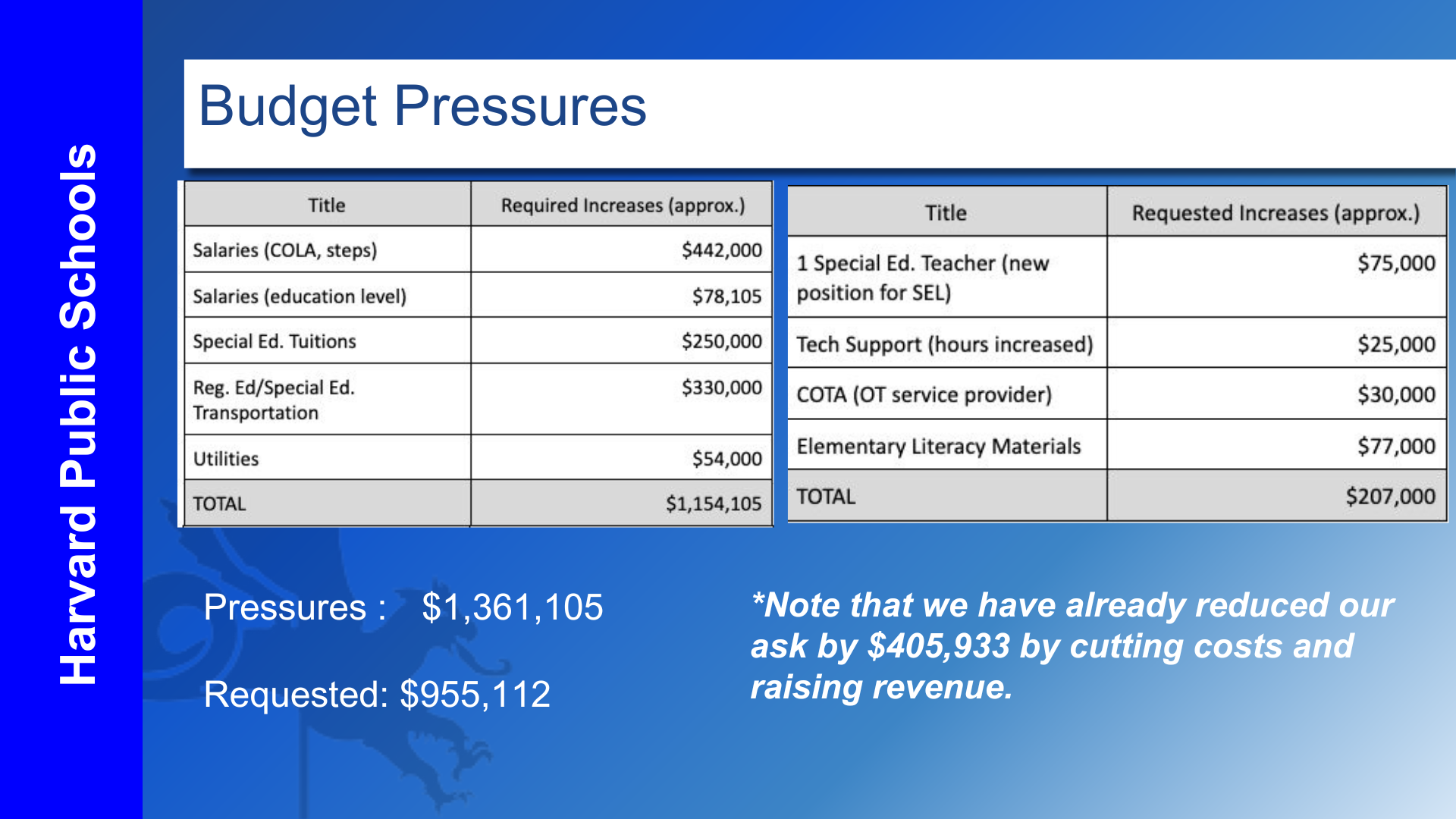Understanding the Tier 1 and Tier 2 School Budgets
Full budget request
The School Committee built a bottom-up annual budget for FY’26, and that includes “Tier 1” and “Tier 2” overrides. It’s important to know that the School Committee doesn’t create the budget with “tiers” in mind - the tiering system is something the Select Board introduced that integrates the school and non-school town budget overrides, in order to provide choices to voters. For the schools to get the requested approved budget, both the Tier 1 and Tier 2 overrides need to pass.
Image source: March 24th School Committee Budget Hearing
How the budget is distributed across categories
This chart gives you an idea of where the budget goes at the highest level. If you drill down into salary vs. non salary expenses, the FY’26 budget allocates approximately 75% of the budget to salaries, and 25% of the budget to non-salary expenses.
Image source: March 24th School Committee Budget Hearing
Why is the budget increasing?
Simply put, prices for what the school does today are increasing, such as with utilities and required salary increases. The column on the right shows the critical items that make up the Tier 2 override.
The new Special Education teacher is expected to save the town money if only 2 students are kept in district as a result.
The new Elementary Literacy Program started this year meets DESE requirements and opens Harvard up to grant opportunities.
The tech support hours and Assistant Occupational Therapist will improve the school experience and tech security and service at every grade level.
Image source: March 24th School Committee Budget Hearing
If you liked these slides, you’re going to love watching the School Committee Budget Hearing, or looking at the full presentation on our Resources page.


